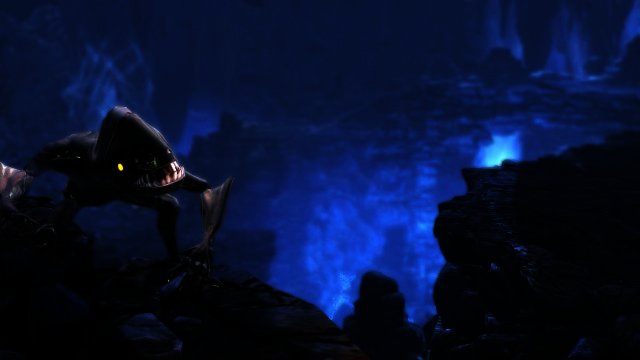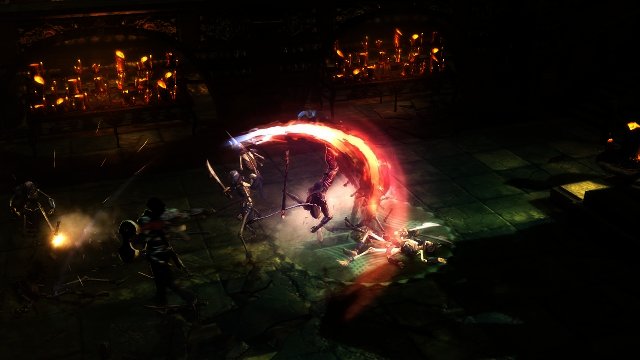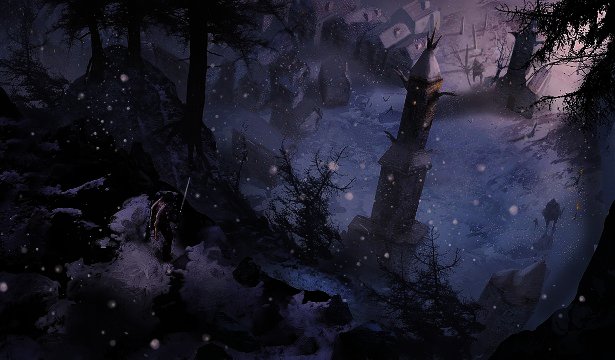The original Dungeon Siege was one of the games which helped shape the modern RPG experience, introducing players to cavernous loot-filled dungeons, party members and 3D graphics, an aspect still fresh in the world of role-playing adventures.
Many years have passed since the original 2002 debut under the helm of Gas Powered Games, with Obsidian Entertainment taking over the Dungeon Siege reins and releasing the third iteration this year. And while it sports some solid gameplay and a ton of collectible loot, the game unfortunately doesn't feel nearly as fresh or revolutionary as its predecessors.

Story
Unlike the previous games, story actually takes on a much more prominent role in Dungeon Siege III, with lots of effort put into weaving the game's tale and attempting to create believable characters. The game even employs Mass Effect-style dialogue options that has you steering the conversation where you'd like it to go, meaning you can be as good or evil as your whims would have at any certain moment.
Getting to the narrative of the game itself, the story is once again set in the Kingdom of Ehb, and takes place roughly 150 years after the events of the first game. The 10th Legion, noble protectors of the land, has been almost completely wiped out, with the evil Jeyne Kassynder enforcing her will upon the kingdom.
It's up to our heroes to put an end to this sad state of affairs, but while the story definitely seems ambitious, its delivery lacked the scale and 'epicness' to really make it stick. Somewhat forgettable characters with rather shallow voice acting doesn't help in this aspect either, and it all culminated in a storyline that, whilst enjoyable, didn't manage to pull us in and say “Wow!” like a Diablo, Dragon Age or Elder Scrolls can.
Loot
Dungeon Siege III, as its name implies, is all about traversing countless dungeons, chambers and caverns, taking out all sorts of vile creatures as you go along smirking collecting tons of valuable loot. In this basic sense of loot-based RPG gameplay the title stands up fine to scrutiny, with useful mechanics, a number of abilities and lots of collecting to be done.
Therefore the game's vanilla RPG experience is strong, and as always there's a certain addictive aspect to seeing your lowly rag-covered hero turn into an armour plated wielder of swords and magic as you progress throughout the game. The title does a good job of pacing valuable drops so you'll always want to inspect the next room or smash open that next crate to check if something valuable can be plundered. Your inventory contains enough slots to house a fair amount of gear, and a mechanic we enjoyed is the ability to turn excess items into gold right from within your inventory screen.
The game's interface was functional and out of the way, leaving ample space for what the player really wants to see, gratuitous fantasy battles.

Heroes
In the game players can take control of one of four different heroes, each specialising in a certain type of combat and abilities. Lucas is the game's primary melee fighter for example, excelling in sword-based combat, while Katarina specialises in range combat and makes use of rifles and shotguns. The other two playable characters include Reinhart Manx, a descendant of Legion mages and Anjali, an archon who can shift between human and elemental fire form.
The game doesn't allow you to customise and name your character the way you see fit. Players will instead have to settle for one of the pre-determined archetypes, but different choices in equipment and abilities can still yield different characters for players of the same type. We were especially annoyed that we had to be named “Lucas Montbarron” for the entirety of our game, but it's more of a personal gripe than a real drawback.
Each of the four classes gets access to nine main abilities, with three used defensively and the other six used for offensive fighting. The game doesn't allow your character to learn all abilities though, requiring a certain amount of selection on behalf of the player, which also means characters of the same type will respond differently depending on which skills they learn.
In addition to these skills your character will utilise two fighting stances to take out enemies, with ranged abilities for example being utilised in a certain stance, and melee fighting being favoured in another. Players can switch between these stances with a single button press, having to choose on the fly what kind of stance to employ in a given situation.

Gameplay
Unlike in other hack-and-slash RPGs the likes of Diablo, players don't have to carry an assortment of health potions with them to survive combat. Instead you'll have to deal with the constantly advancing enemies by frequently employing your character's dodge manoeuvre to open up some ground between you and your foes.
This works well and allows for some pretty slick combat sequences to be found from time to time. The rest of the game's combat takes on the classic RPG feel, with lots of sword hacking and spell casting taking place. Some of the spells in the game looked really spectacular, and when it comes to using your abilities, the game drops the standard 'mana bar', instead having your character build up 'focus' with each attack you land on an enemy. By constantly staying on the attack you can build up your focus meter quite quickly, allowing players to utilise all their most powerful abilities.
The game features a wide array of different enemy types from the classic reanimated skeletons to huge magical beasts. A number of boss fights takes place to note the completion of certain sections of the game, and these were generally visually impressive affairs which give you a nice testbed for your shiny new weapons to show their might.
Unfortunately due to its transition to the consoles, the game's camera suffers, feeling clumsy during more than one occasion. Players also can't click on a certain enemy to attack it, but instead your character has to be facing in its direction, upon which you can give the attack command. A free-click attack system is obviously not possible with console controllers, but even the PC version of the game suffers from this fault.

Co-op
The original Dungeon Siege was one of the pioneers of party-based dungeon slaying instead of following the usual lone-wolf approach. Whether you prefer to battle in a party or on your own depends on the player, but in Dungeon Siege III an AI controlled team mate will be following you around at all times.
These party members weren't too silly as far as supporting AI goes, aiding you in casting spells, vanquishing enemies and reviving you when need be. Unfortunately you can only have one allied companion in your party at any time, although you can switch between different allied characters at any time during the game. As players progress you'll meet the other three heroes during the game (there are four heroes, you choose one), with them serving as your AI team mates.
When it comes to online multiplayer the game is capable of supporting up to four players in a single session, but unfortunately this experience is hounded by poor camera controls which requires everyone to stick close to one another.
Another glaring omission is the fact that you can't use your custom character to play alongside your friends' characters. Instead if you want to play together you have to take over for one of their AI characters, and players can't transfer any of the skills or loot they earn back to their game. Any single instance can't have more than one of a certain hero in the game, so you can't for example create a scenario where you and your friends all decide to play as spell slinging morphlings.
This makes the co-op component feel extremely restrictive. Make no mistake, it's still fun to take on dungeons teeming with monsters with your friends, but this is only really going to be possible (and fun) when done with close friends. Finding a random stranger online and then having to play as one of their support characters isn't exactly the perfect multiplayer RPG experience.

Presentation
The game’s visuals were impressive, if not exactly on the cutting edge of graphical technology. Environments generally appeared attractive and expansive, while nice detail can be seen on character models when zooming in. Spells and effects also looked great, and sound in the game sufficiently followed and mirrored the on-screen action.
Something we really enjoyed was that the game doesn’t sport any loading screens. Instead the gameworld is seamlessly generated as you move through it, with only a slight slowing down in pace indicating the loading in of a new area.
Conclusion
Dungeon Siege III manages to get a lot of things right, but at the same time destroys a lot of elements that didn't need changing in the first place, such as the co-op element and a wonky camera. The game makes an admirable attempt at appealing to the console crowd, and if you enjoy your straightforward dungeon looting quests then the game will satisfy, if not leave you breathless. And while previous Dungeon Siege titles kept players busy for tens of hours, the single player campaign in Dungeon Siege III is only worth six to ten hours of gameplay, depending on how fast you progress.





